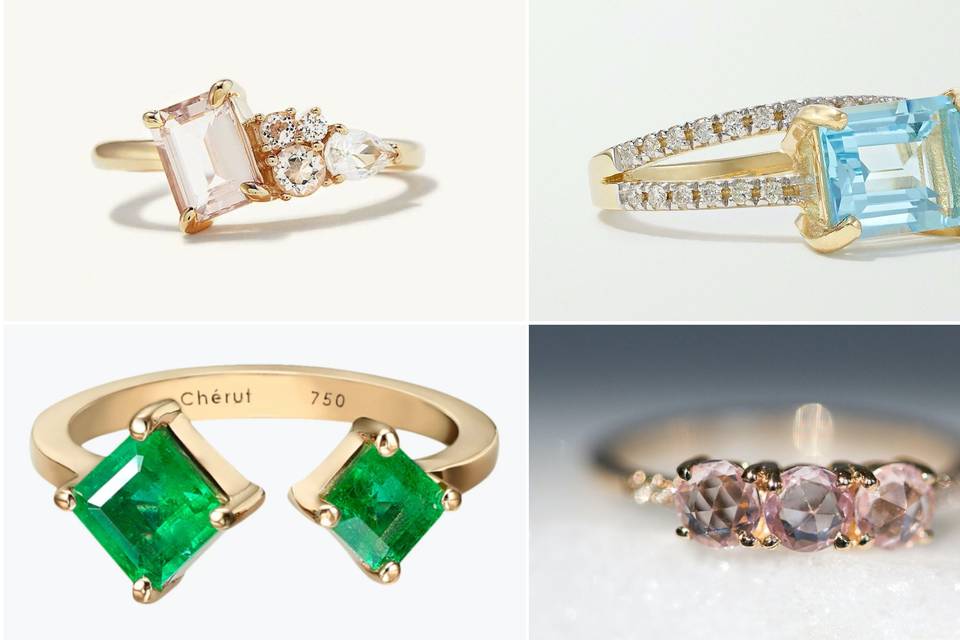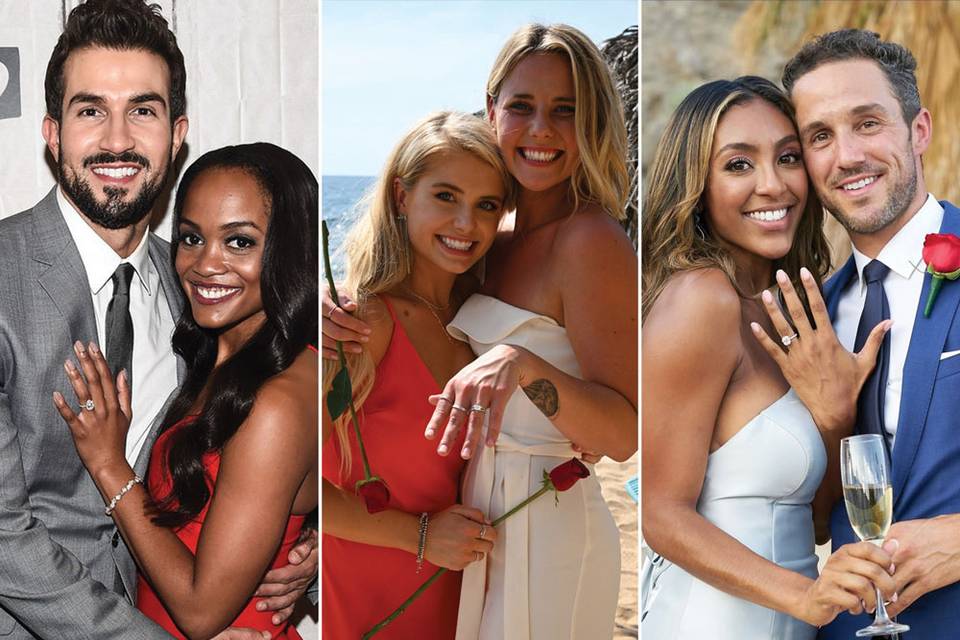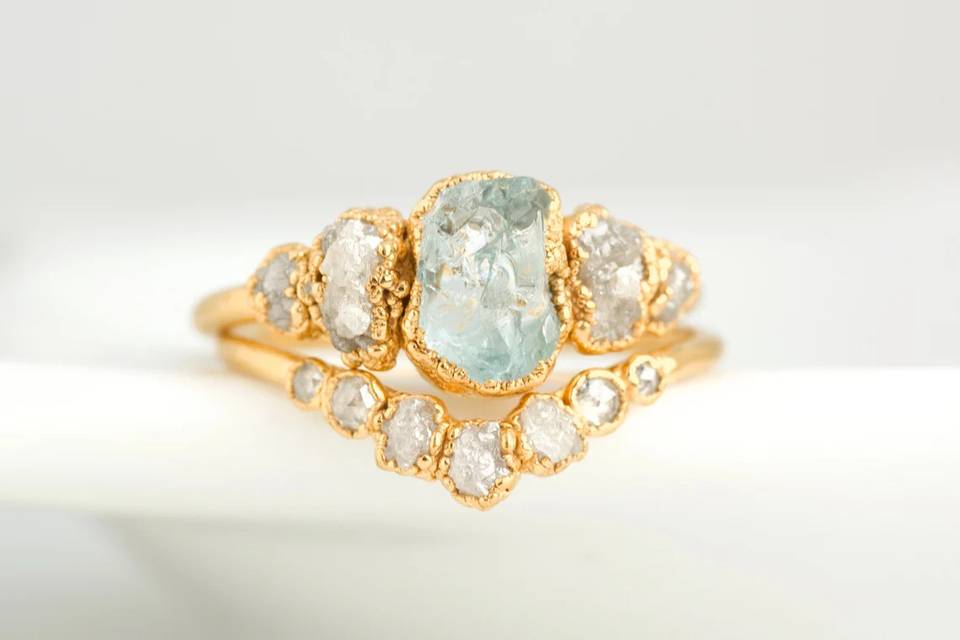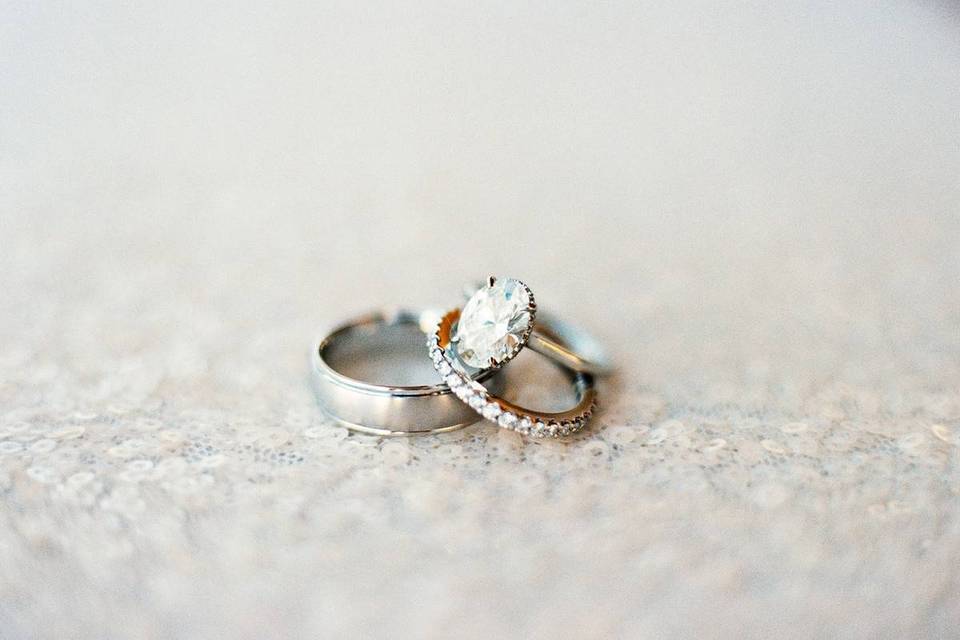This is How Much an Engagement Ring REALLY Costs
Ready to pop the question? Now it's time to purchase an engagement ring! But how much should you spend on an engagement ring? Here are some answers for you.
We have included third party products to help you navigate and enjoy life’s biggest moments. Purchases made through links on this page may earn us a commission.
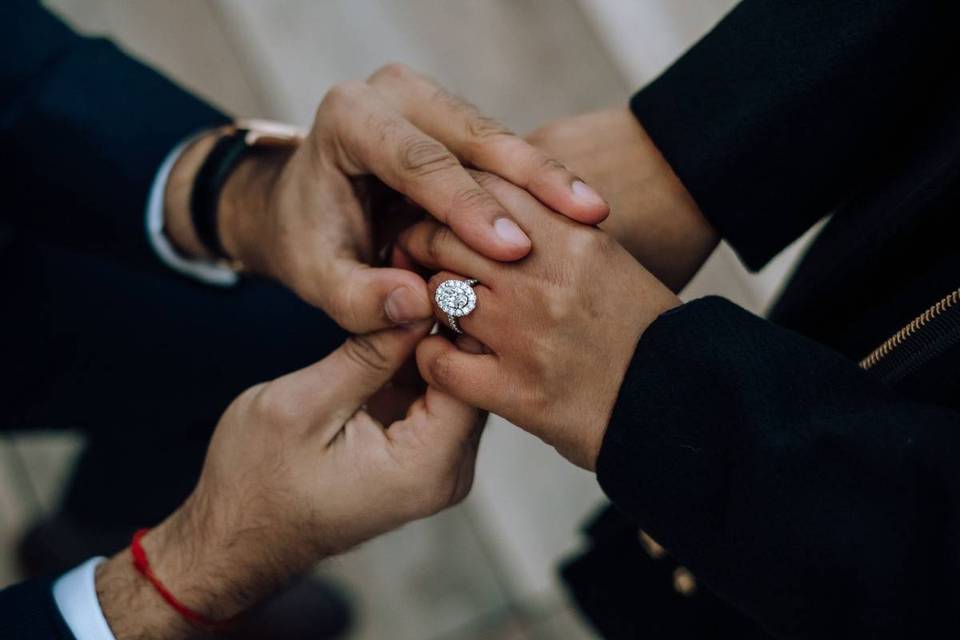
If you’re planning to pop the question in the coming months, you’ve probably already asked the question “how much are engagement rings?” or "what's average engagement ring cost?" Well, the short answer is: It depends. What’s certain is that Americans no longer look to the old “three months’ salary” adage to figure out how much to spend on a ring (fun fact: The three months’ salary rule was a marketing ploy created by jewelry companies in the 1980s). These days, there are so many engagement rings on the market and a wide price range—and engagement rings don’t have to feature diamonds as the center stone to be desirable and stunning (morganite, we’re looking at you!). In fact, according to the WeddingWire Newlywed Report only 32 percent of ring purchasers spent approximately 2-months' salary on an engagement ring.
So, how much are engagement rings? What's the national average cost of an engagement ring? We asked thousands of couples to spill on how much they spent on this very special piece of jewelry.
Average Cost of an Engagement Ring
According to the 2021 WeddingWire Newlywed Report, the average proposer spent $5,500 on an engagement ring. However, the study found that roughly half of couples will spend under $5,000 on the engagement ring—though 18 percent spend more than $10,000! All this to say that the cost of an engagement ring really varies, depending on factors such as the stone type, size, setting, and metal.
Where you live may also have an impact on how much you’ll spend on an engagement ring. According to the Newlywed Report, proposers in the Mid-Atlantic region spent the most on an engagement ring, at $7,600, while those in the Southeast spent the least, at $5,250.
Factors That Affect Engagement Ring Cost
If you’re choosing a diamond engagement ring (87 percent of proposers do!), it’s essential to learn about the 4 C’s—color, cut, clarity, and carat—which can all greatly affect a ring's price tag. A diamond’s certification by an organization like The Gemological Institute of America (GIA) or American Gem Society (AGS) can help you learn more about a specific diamond’s quality and ratings.
- Color: It’s not a diamond’s color that gives it a higher value, it’s the lack of color. The more crystal-clear and colorless a diamond is, the more valuable and high quality it is.
- Cut: A diamond’s cut, or shape, can affect its price. Round diamonds, for example, are more labor-intensive to create, and therefore cost more—but they’re also the most popular cut! Other cuts, like emerald, cushion, and princess cut diamonds, tend to be less expensive.
- Clarity: While a diamond may look perfect, most diamonds have inclusions and blemishes that may or may not be visible to the naked eye. The less obvious a diamond’s imperfections are, the more valuable it will be.
- Carat Weight: According to the WeddingWire study, 50 percent of engagement rings feature diamonds that are are between 1 and 2 carats. Even a smaller-than-1-carat-diamond can make a major difference in terms of pricing.
Another important part of selecting an engagement ring is choosing the metal. Platinum is the most expensive ring metal, but it’s extremely durable and requires little maintenance. Yellow gold is more affordable, but can be scratched relatively easily. White gold is another more affordable option—and it's the most popular metal for engagement rings, according to our study (though it's not hypoallergenic). But it turns out that rose gold is more durable than either yellow or white gold, but it's not hypoallergenic because it contains copper.
An engagement ring’s setting can also impact its price. A simple, unadorned band with a solitaire stone will likely cost less than a band covered in stones. However, according to the WeddingWire study, 71 percent of couples chose engagement rings with side stones.
Saving Money on an Engagement Ring
When thinking about how much engagement rings cost, it’s easy to get sticker shock. However, there are ways to save money if you think creatively.
- Set a ring budget: Knowing that the average proposer spends $5,500 on an engagement ring, decide what you reasonably afford to spend before visiting a store or checking out rings online. Budgeting appropriately and having an amount of money in mind will help you narrow down the options—and according to our study, two-thirds of ring buyers who set a budget before shopping stuck to it. Don't forget that you'll also have to buy wedding bands as your big day nears, so be sure there's room in your budget for those wedding rings, as well.
- Consider lab-grown diamonds: Though these diamonds are man-made, rather than mined, they are real. Not only are they less expensive than mined diamonds, they’re conflict-free.
- Check out popular diamond alternatives: If you have a more unique style, why not opt for a non-diamond engagement ring? Morganite, a pink gemstone, is trending right now.
- Go vintage: A family heirloom ring has a special history—and, if you don’t plan on revamping it too much, can be much more affordable than a brand-new piece of jewelry.
- Shop around: Whether you choose to buy an engagement ring from a local jewelry store, a national retailer, or online, don’t be afraid to check out several places and compare engagement ring prices and styles. On average, proposers visit three jewelry stores and look at 15 rings before making a final decision.
When to Buy an Engagement Ring
Our best advice? Don’t wait until the last minute. According to the Newlywed Report, nearly half of proposers started researching and ring shopping more than five months ahead of the proposal—and we think that’s a good rule of thumb. Giving yourself plenty of time allows you to be a more educated consumer, and find the best ring for your money—you’re more likely to overspend if you rush the process.
When it comes to actually buying the ring, 71 percent of respondents made their final purchase two months before the proposal. Of course, you’ll have to hide the ring during this time if you’re planning a surprise proposal, so make sure you have a good secret spot picked out!
Where to Buy an Engagement Ring
From visiting a local jewelry store to shopping online, there are lots of options when it comes to where to purchase your engagement ring. According to the WeddingWire study, 40 percent of proposers bought an engagement ring at a local jewelry retailer, 30 percent at a national chain, and 10 percent chose an online retailer, like James Allen or Blue Nile. Again, it’s all about finding a ring that fits your partner’s style and is within budget—so feel free to take your time and look around!
Engagement Ring Cost FAQs
How much is too much to spend on an engagement ring?
The answer to this question varies from person to person—that’s why it’s so important to set a budget before starting to shop and be upfront with your jeweler right off the bat. While it’s okay to give yourself some wiggle room (a couple hundred dollars, perhaps) when it comes to how much your engagement ring will cost, don’t consider rings that are way over budget. There are so many rings to choose from, that blowing your budget by thousands or dollars is usually totally unnecessary.
Are there financing options for an engagement ring?
Yes, some jewelers offer financing options for engagement rings, often by opening a credit card through the jeweler or brand, or by opening a credit card with a zero percent APR for a given period of time. You might also consider taking out a loan, depending on your personal financial situation.
Does the price of an engagement ring matter?
No way! Our research shows that ring recipients care most about a ring’s style and appearance—not the diamond size or how much the engagement ring costs. And with so many choices out there, you’re sure to find the perfect engagement ring for your partner that's within budget.


